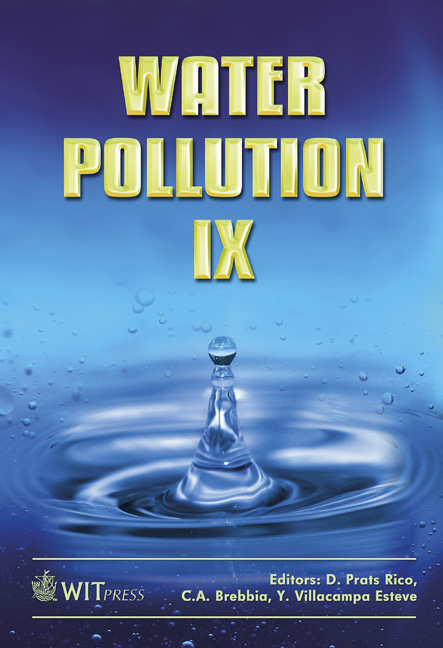Agrochemical Modeling In Rivers: The Sampaio Irrigation Project Case Study
Price
Free (open access)
Transaction
Volume
111
Pages
10
Page Range
361 - 370
Published
2008
Size
363 kb
Paper DOI
10.2495/WP080351
Copyright
WIT Press
Author(s)
G. C. Nascimento & A. M. Pereira Andreazza
Abstract
This study evaluates the agrochemical impact present in irrigation effluents of the surrounding hydric environment. The case studied refers to the Sampaio Irrigation Project, located at the far north of Tocantins State, on the left margin of the Tocantins River, in which case this river is the receiving body of polder drainage intended for a rice culture using flood irrigation. By using mathematical modeling, three distinct hydrological scenarios were simulated, aiming to identify concentrations of the chemical compounds used in the Tocantins River, and the range of the impacted area, adopted as the area under direct influence of this impact. We concluded that only the compound Carbaryl had higher concentrations than the limitations allowed for the Tocantins River by CONAMA [National Environmental Council] Resolution No. 357/2005 for class 1 and class 2 rivers, and that the extension of the area affected by such concentrations is of about 6 km [3.73 miles]. Having obtained these results from our model, specific measures were recommended to prevent the identified impact, and added to the Environmental Impact Study and Environmental Impact Report (EIA/RIMA) for the project. Keywords: environmental impact, agrochemical composts, toxic substances modeling in water. 1 Introduction The drainage of agricultural areas often introduces strong environmental impacts in surrounding areas as it carries part of the agrochemical substances applied to crops to natural water resources. These impacts are an object of concern all over
Keywords
environmental impact, agrochemical composts, toxic substancesmodeling in water.





